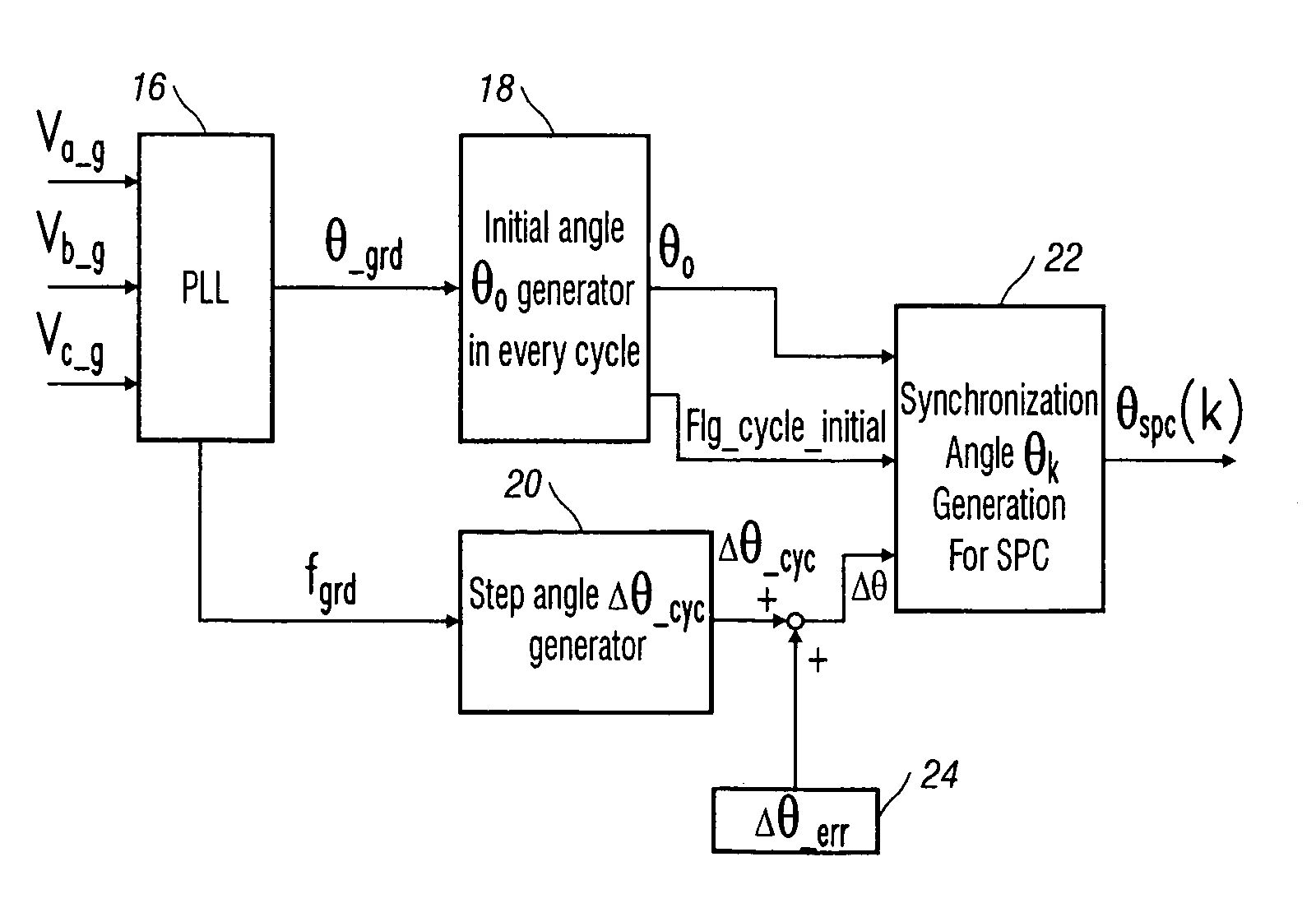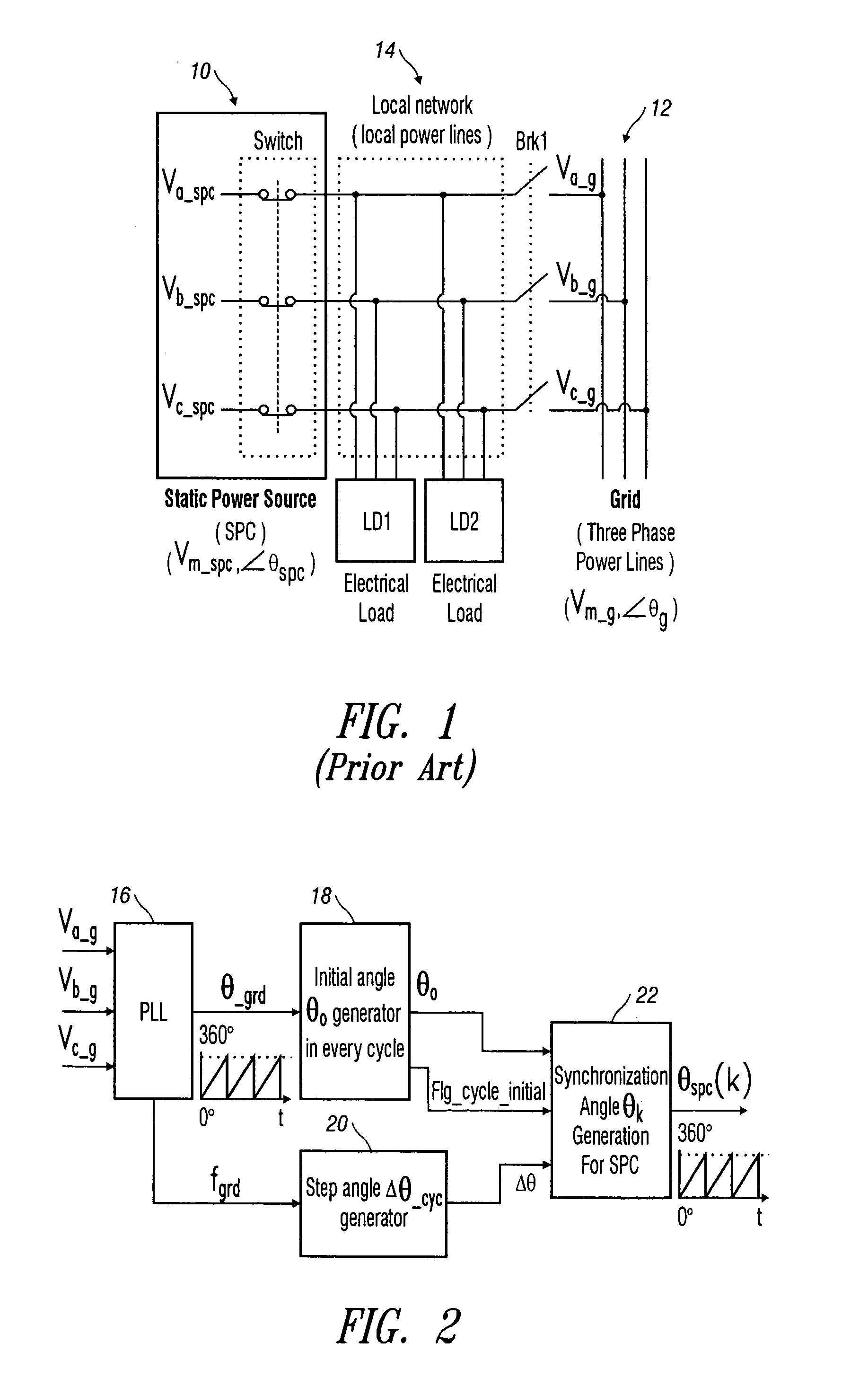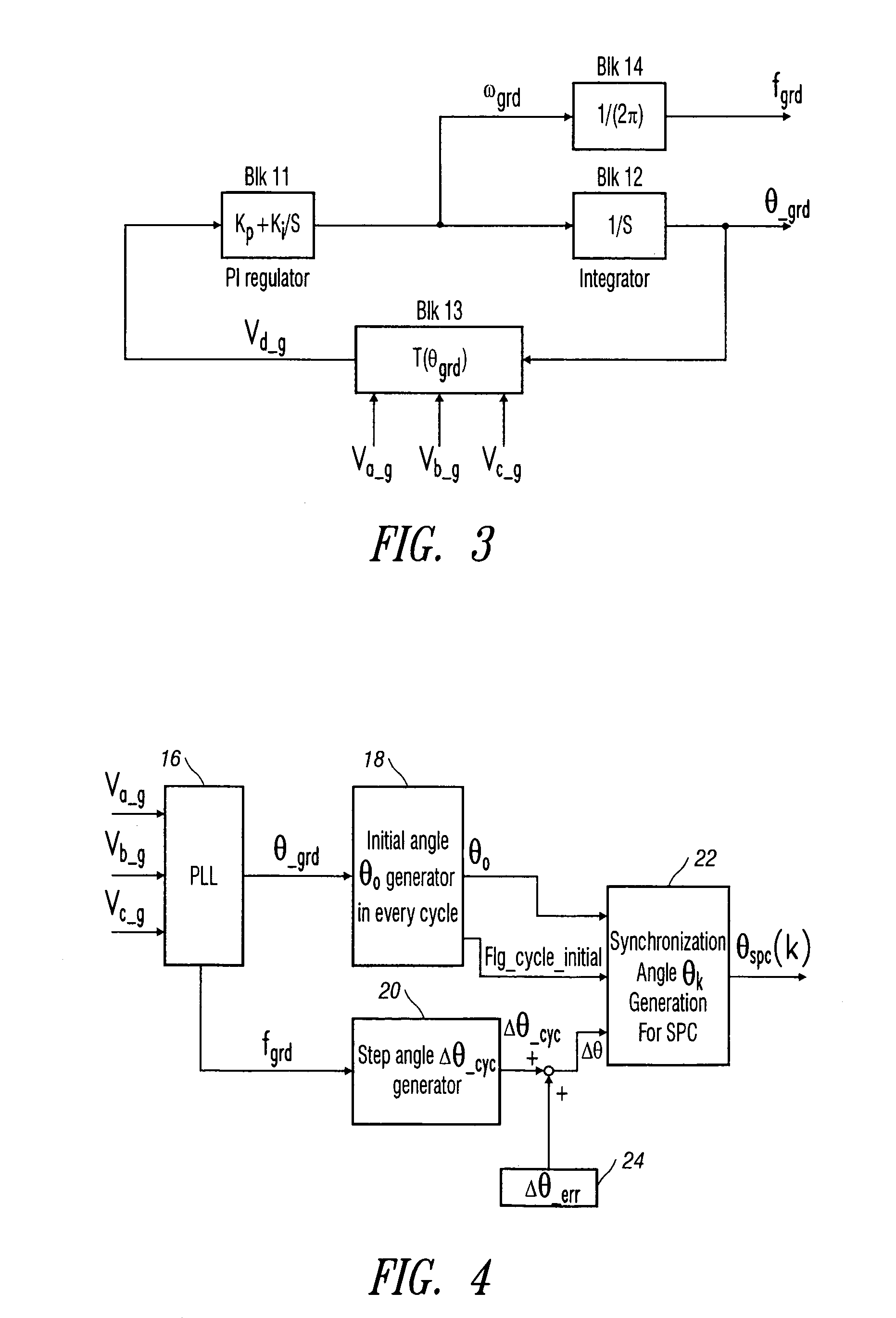Devices and methods for detecting islanding operation of a static power source
a static power source and islanding detection technology, applied in the field of electric power, can solve the problems of compromising performance, allowing the connection of such inverters, and not desirable islanding operation, and achieve the effect of enhancing the desired performance of islanding detection and small phase angle error
- Summary
- Abstract
- Description
- Claims
- Application Information
AI Technical Summary
Benefits of technology
Problems solved by technology
Method used
Image
Examples
Embodiment Construction
[0024]Referring now in detail to an embodiment of the present devices and methods, an example of which is illustrated in the accompanying drawings, in which like numerals designate like components, the present devices and methods provide a very reliable method of detecting islanding operation of a static power source (SPC) 10, as shown in FIG. 1, connected to a grid 12 utilizing phase angle error injection. In the normal operation of the existing grid 12, an embodiment of the present devices and methods introduces a very small phase angle error for output voltage of the SPC 10 in every voltage cycle. However, the average frequency of the SPC 10 is not influenced by the phase error, and there is no frequency drift from the output voltage of the SPC 10 because the accumulated small phase angle error is corrected at each voltage cycle in synchronization with a voltage of the grid 12, if the grid 12 is present.
[0025]In abnormal operation of a grid 12 loss, this intentional small phase e...
PUM
 Login to View More
Login to View More Abstract
Description
Claims
Application Information
 Login to View More
Login to View More - R&D
- Intellectual Property
- Life Sciences
- Materials
- Tech Scout
- Unparalleled Data Quality
- Higher Quality Content
- 60% Fewer Hallucinations
Browse by: Latest US Patents, China's latest patents, Technical Efficacy Thesaurus, Application Domain, Technology Topic, Popular Technical Reports.
© 2025 PatSnap. All rights reserved.Legal|Privacy policy|Modern Slavery Act Transparency Statement|Sitemap|About US| Contact US: help@patsnap.com



